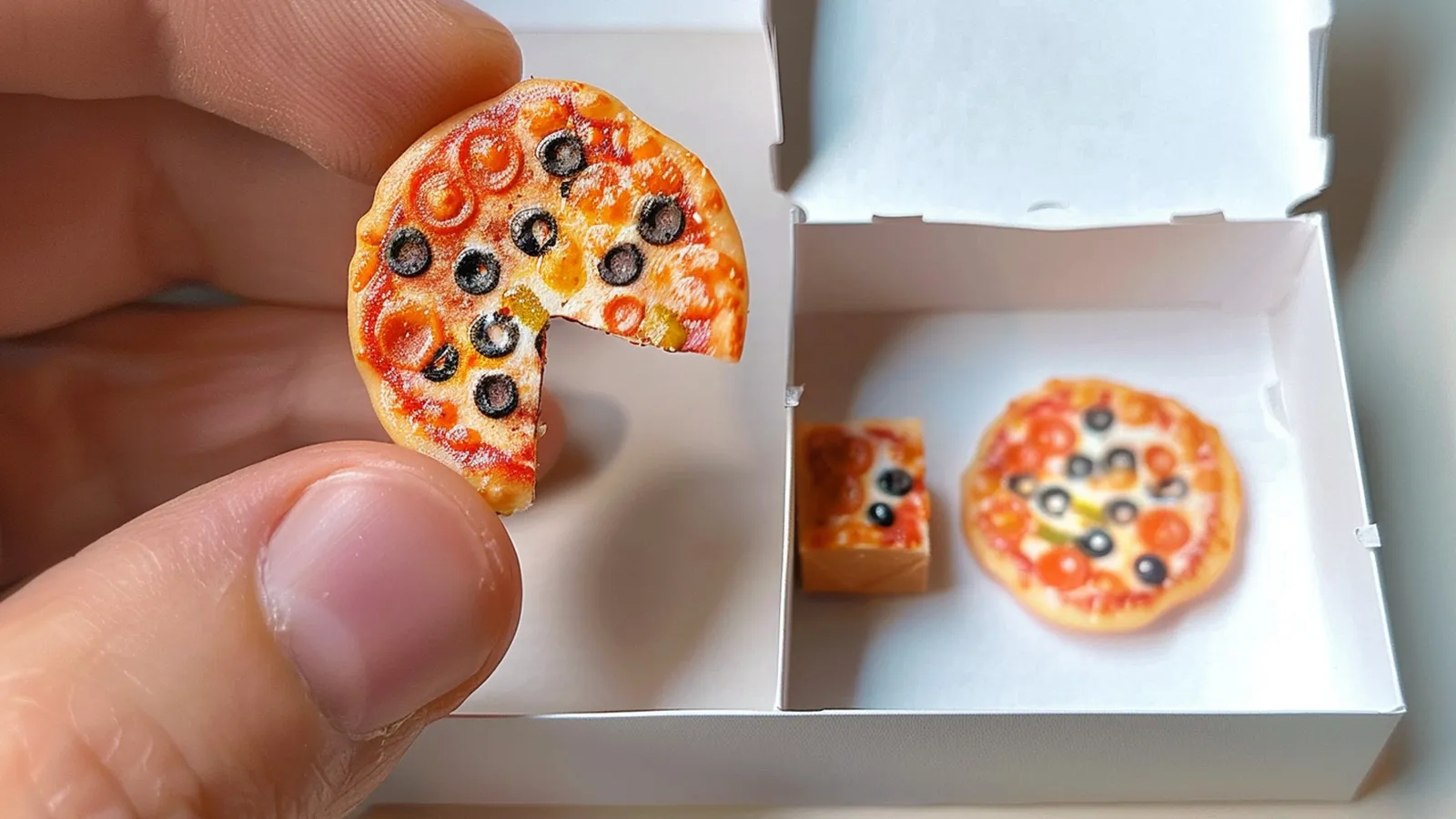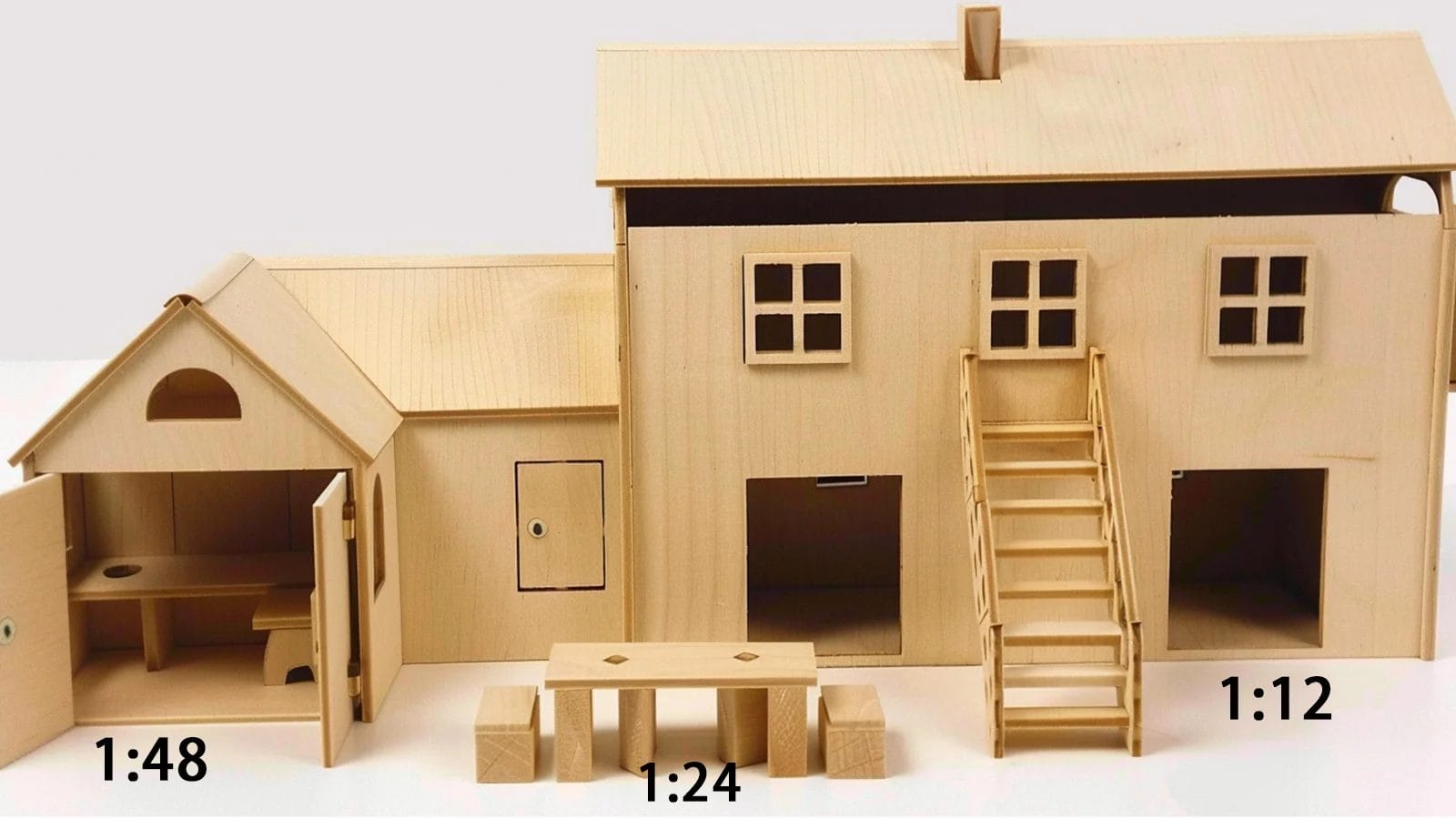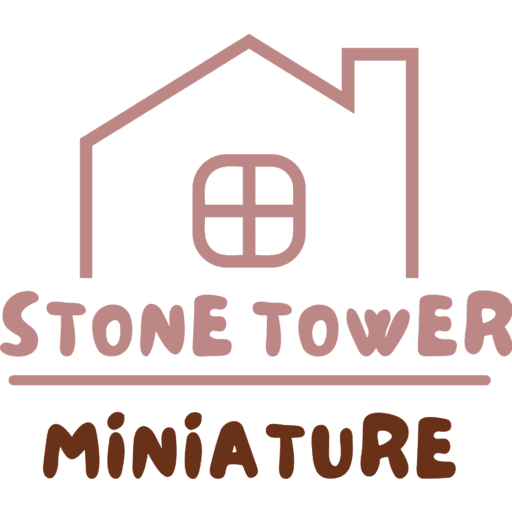
What Is Dollhouse Scale? A Beginner’s Guide to Miniature Sizes
When you step into the world of dollhouses, you’ll quickly realize that getting the scale right is crucial. You’re not just building a miniature house but creating a tiny, intricate universe where every piece, from furniture to fixtures, must work together in harmony.
But what does it really mean to get the scale right? You’ve likely seen ratios like 1:6, 1:12, and so on, but do you know how to apply them?
As you explore the world of dollhouse miniatures, understanding scale becomes the key to unlocking a realistic, visually stunning space that transports you to a tiny, perfect world.
Key Takeaways
- The dollhouse scale is the ratio between miniature items and their real-life counterparts.
- Common dollhouse scales include 1:6, 1:12, 1:16, and 1:18, each catering to different preferences and doll sizes.
- Understanding the scale ensures item compatibility, prevents clutter, and helps select appropriate sizes for a harmonious miniature setting.
- Choosing the correct scale depends on factors like doll size, available space, and desired level of detail.
- Consistency with the chosen scale ensures proportional environments and realistic miniature representations of everyday objects.
What Is Dollhouse Scale?
When planning to create a miniature world within a dollhouse, grasping the concept of dollhouse scale is essential.
Dollhouse scale is the ratio between the size of miniature items and their real-life counterparts. This ratio affects the sizes of furniture and accessories, ensuring a realistic look.
Choosing the correct scale ensures compatibility among furniture and accessories, preventing a cluttered look.
Common Dollhouse Scales

As you explore the world of dollhouses, you’ll encounter various scales that cater to different needs and preferences.
Let’s take a closer look at these common dollhouse scales to understand what they offer.
1:12 Scale
The 1:12 scale, often used in dollhouses and miniature models, means that 1 inch in the miniature represents 12 inches in real life. This scale provides a manageable size for detailed craftsmanship, allowing enthusiasts to create intricate replicas of real-world objects.
1:24 Scale
A 1:24 scale is a popular dollhouse size. This scale means that each unit of measurement on the model represents 24 units on the actual object.
This size strikes a good balance between detail and manageability, allowing for intricate features without being overly large.
1:48 Scale
The 1:48 dollhouse scale is often referred to as the “quarter scale.” It means that one inch in the dollhouse represents four feet in real life. This miniature size allows for intricate details while saving space.
Due to its compact size, many enthusiasts find it easier to create complete, furnished homes that fit comfortably on a shelf or table. This scale is popular for its versatility and the precision it allows in miniature craftsmanship.
1:6 Scale
The 1:6 dollhouse scale is also a popular size for collectors and hobbyists, particularly those who enjoy creating detailed miniature scenes.
In this scale, 1 inch represents 6 inches in real life, meaning that the miniatures are approximately one-sixth the size of their real-world counterparts. This scale is commonly used for fashion dolls like Barbie and action figures such as G.I. Joe, providing ample space to incorporate intricate details and realistic furnishings.
How to Choose the Right Scale

When choosing a dollhouse scale, consider a few key factors to ensure you get it right.
You’ll want to think about the size of your dolls, the space you have available, and the level of detail you want to achieve.
Factors to Consider When Choosing a Scale
Determining the ideal scale for your dollhouse requires careful consideration of several key factors. Start with the size of the dolls or figurines that will inhabit the space. Choose a scale that fits your dolls comfortably inside the house.
Next, think about the available space where you’ll display the dollhouse. Will it fit on a shelf or in a corner? Consider the level of detail you want in the miniature furnishings and how intricate you want the accessories to be.
Research popular scales like 1:12, 1:24, and 1:48 to determine which scale is best for you. Ensure the chosen scale aligns with the type of accessories and furniture you want to include in the dollhouse.
Pros and Cons of Different Scales
Considering your dollhouse vision, choosing the right scale is crucial, as each scale has its unique benefits and drawbacks. The 1:12 scale is popular, offering a good balance between detail and size, making it ideal for most dollhouses.
However, if you prefer fashion dolls like Barbie, the 1:6 scale or Playscale might be the way to go, but be prepared to dedicate more space. The 1:16 scale, or 3/4 scale, provides a unique sizing perspective, while the 1:18 scale, or 2/3 scale, is used in Lundby dollhouses.
How to Convert Real-Life Measurements to Dollhouse Scale
To convert real-life measurements to dollhouse scale, you’ll need to divide the actual measurement by the scale ratio, ensuring that your miniature items fit perfectly within your tiny world.
For instance, if you’re working with a 1:12 dollhouse scale and want to create a miniature chair, you’d divide the real-life chair’s measurements by 12. This ensures that your dollhouse miniatures are proportionate and realistic.
Using common scales available, such as 1:6, 1:12, 1:16, or 1:18, helps maintain consistency throughout your dollhouse.
Conclusion
You’ve mastered the concept of dollhouse scale, and now you’re ready to create a miniature world that’s both realistic and visually stunning.
By selecting the perfect scale for your dollhouse, you’ll ensure a harmonious blend of furniture and accessories.
Remember, the correct scale will transport you to a world of tiny perfection, where every detail is meticulously crafted to delight the eye.
FAQs
What is the difference between 1:12 and 1:24 scale dollhouses?
The main difference is the size: 1:12 is larger, allowing for more detailed furnishings. On the other hand, 1:24 is smaller and ideal for those with limited space.
How big is a 1:24-scale dollhouse?
Since it’s half the size of a 1:12 scale dollhouse, you can expect it to be smaller, with doorways around 3-4 inches high and male dolls standing 2.5-3 inches tall.
Are barbies 1/12 scale?
Barbies are actually a 1:6 scale, which is larger than the standard dollhouse scale. So, you’ll need to adjust furniture and accessories accordingly to fit your Barbie’s proportions.
How big is a 1:6 scale dollhouse?
Since 1 inch equals 6 inches in full size, your dollhouse would be one-sixth the size of a real house, making it quite compact and adorable!
